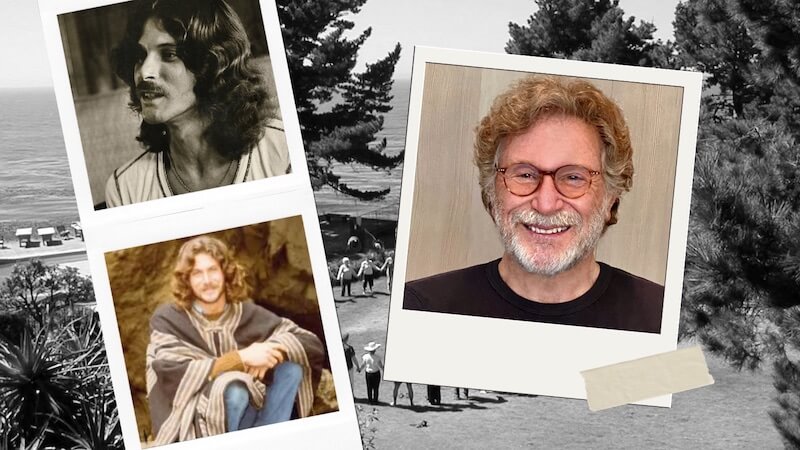
A psychologist, gerontologist, lecturer, and bestselling author (Age Wave, Bodymind), Ken Dychtwald is widely considered the nation's foremost authority on aging. In 2016, Ken and his wife, Maddy, received the Esalen Prize for their outstanding contributions to advancing human potential. He tells us about arriving at Esalen in the fall of 1970 — a time when everything seemed possible and a young man from Newark discovered an entirely new world.
“I was a kid, just twenty years old. I had a pretty wonderful upbringing. I was born in a middle-class, maybe lower middle-class family in Newark, New Jersey. There was a complicated racial dance going on in Newark: my first day of high school, the school was 90% white. By my last day, the school was 90% black. It was a time of massive transition.
My intent was to become an electrical engineer or a physicist. I’d gone to one of these vocational testing places and they told me that I had strong aptitudes for the sciences and that I should be an electrical engineer. I figured, okay, then that's what I'll be. So I went to a little engineering school in Bethlehem, Pennsylvania, Lehigh University. It was only about an hour drive from my folks.
Then, in my junior year, in 1969, I was asked to take a psychology course to round out my training. The professor had just recently graduated from Stanford, and the course was the Psychology of Human Potential. My books were The Varieties of the Psychedelic Experience by Masters and Houston, Consciousness: East and West by Alan Watts, Toward a Psychology of Being by Abraham Maslow, and Joy by William Schutz. The idea of this course was that human beings had extraordinary capabilities, vast potential, and we were only maybe tapping into 3 to 5% of it.
I thought, wow, this is sort of amazing. And as I dug deeper, I learned that there were ancient therapies, Tai Chi, yoga, practices that perhaps could unleash these potentials. There were new things arriving: bioenergetics, Rolfing, Feldenkrais, encounter, gestalt: all of them designed to open up the restrictions and let people be liberated, to live a kind of a bigger, grander version of their possibilities.
I was just taken by all this. And then I noticed in all of these books, there'd be a mention in the biography, Alan Watts is a teacher at the Esalen Institute. William Schulz left Harvard to be a teacher at the Esalen Institute. And so I dropped out of college. There had been nothing in my life, up until that point, that would indicate that that was something I would ever do.
I had no idea about California, the Pacific Ocean, or Highway 1. In fact, I had never been west of Pennsylvania. But I wanted to see this place called Esalen.
So I sold everything I had, borrowed a lot of money, even cut into some of my bar mitzvah money. I flew to California with my backpack and long hair and a guitar. When I went out on Highway 1 to put up my thumb to hitchhike, I promptly got arrested. They thought I was a homeless runaway.
When I finally made it down to Esalen, it was a bell bottom, no bra, mutton chops, sideburns, John Lennon glasses kind of scene. I felt like I was in a supernatural world. The property, the people, the mood, the attitude —- everything about it was otherworldly for me. I signed up for six months of workshops: Friday to Sunday, Sunday to Friday, one right after the other. I didn't know that you're supposed to take a workshop and then digest it for a few years. I just thought it was like a semester at college.
I took a course called “Sensory Awakening” from a guy named Bernard Gunther, who had been a student of Charlotte Selver. And that course was really simple: We would hold a stone in our hand for, like, a half a day. Or you’d smell a flower. Or you'd have somebody bathe your feet. And the idea of that was in a post-World War II, highly uptight world, let's feel again. Nothing abusive, nothing sexual, but let's feel again!
Like a symphony, one workshop led to the next. It was a hopeful time, a time of cross-fertilization. I didn't yet feel that Esalen was my tribe, but there was very much the feeling, the idea, that humanity was at the brink of an extraordinary evolutionary jump — that we were going to see kinder people. We were going to have more rich relationships. We were going to understand our bodies in a way that would help us be healthy and vibrant and orgasmic and beaming, and that we would see people less superficially, and more deeply. And that from all of that would come a new psychology, a new medicine, maybe even a new humanity.
I remember sitting in the baths and there would be Sam Keen, locked in a really intense discussion with Hector Prestera, a physician who dropped out to become an acupuncturist golfer. And sitting next to them would be John Lilly, who had just done all his research on dolphins and their brains. I would just sit there and listen to them have these discussions until the sun rose.
I thought, man, this is what it must've been like in Paris when the great artists were coming together. There are moments in time when people come together to think and talk and share and dream and ideate. And I thought that I was the luckiest guy in the world because I had somehow gotten there.”
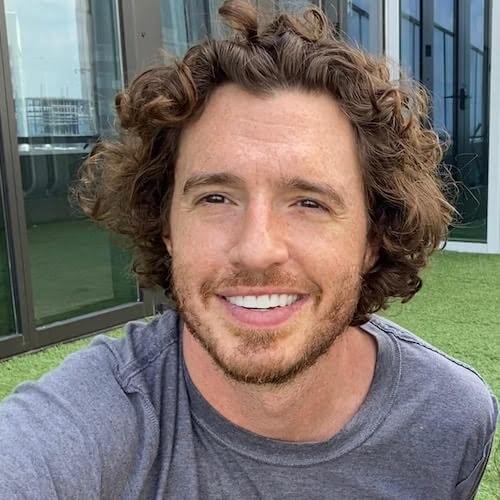
“Remembering to be as self compassionate as I can and praying to the divine that we're all a part of.”
–Aaron
“Prayer, reading, meditation, walking.”
–Karen
“Erratically — which is an ongoing stream of practice to find peace.”
–Charles
“Try on a daily basis to be kind to myself and to realize that making mistakes is a part of the human condition. Learning from our mistakes is a journey. But it starts with compassion and caring. First for oneself.”
–Steve
“Physically: aerobic exercise, volleyball, ice hockey, cycling, sailing. Emotionally: unfortunately I have to work to ‘not care’ about people or situations which may end painfully. Along the lines of ‘attachment is the source of suffering’, so best to avoid it or limit its scope. Sad though because it could also be the source of great joy. Is it worth the risk?“
–Rainer
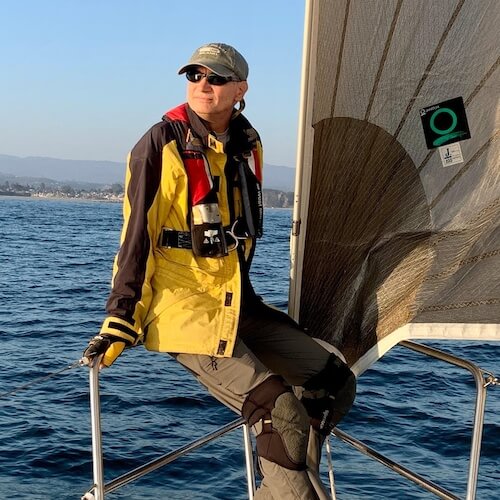

“It's time for my heart to be nurtured on one level yet contained on another. To go easy on me and to allow my feelings to be validated, not judged harshly. On the other hand, to let the heart rule with equanimity and not lead the mind and body around like a master.”
–Suzanne
“I spend time thinking of everything I am grateful for, and I try to develop my ability to express compassion for myself and others without reservation. I take time to do the things I need to do to keep myself healthy and happy. This includes taking experiential workshops, fostering relationships, and participating within groups which have a similar interest to become a more compassionate and fulfilled being.“
–Peter
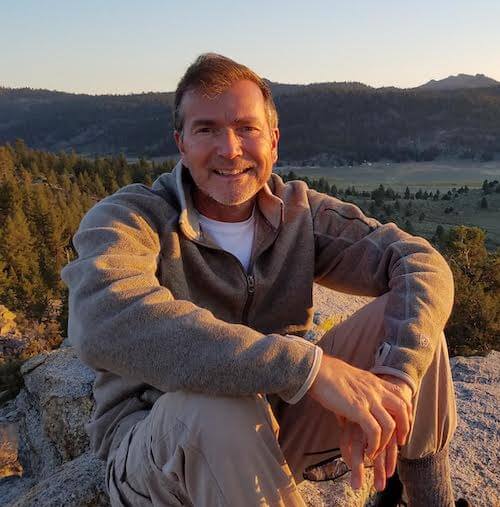
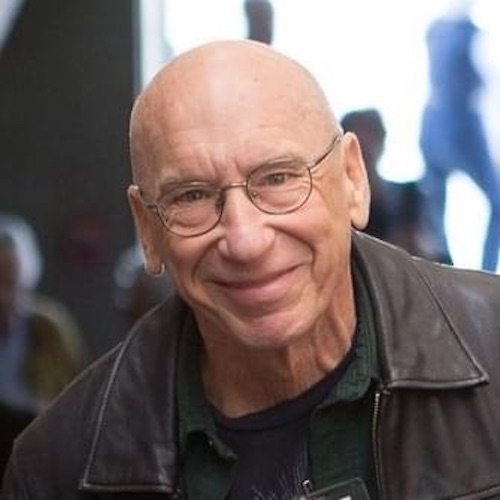
“Self-forgiveness for my own judgments. And oh yeah, coming to Esalen.”
–David B.
“Hmm, this is a tough one! I guess I take care of my heart through fostering relationships with people I feel connected to. Spending quality time with them (whether we're on the phone, through messages/letters, on Zoom, or in-person). Being there for them, listening to them, sharing what's going on with me, my struggles and my successes... like we do in the Esalen weekly Friends of Esalen Zoom sessions!”
–Lori

“I remind myself in many ways of the fact that " Love is all there is!" LOVE is the prize and this one precious life is the stage we get to learn our lessons. I get out into nature, hike, camp, river kayak, fly fish, garden, I create, I dance (not enough!), and I remain grateful for each day, each breath, each moment. Being in the moment, awake, and remembering the gift of life and my feeling of gratitude for all of creation.”
–Steven
“My physical heart by limiting stress and eating a heart-healthy diet. My emotional heart by staying in love with the world and by knowing that all disappointment and loss will pass.“
–David Z.
Today, September 29, is World Heart Day. Strike up a conversation with your own heart and as you feel comfortable, encourage others to do the same. As part of our own transformations and self-care, we sometimes ask for others to illuminate and enliven our hearts or speak our love language.
What if we could do this for ourselves too, even if just for today… or to start a heart practice, forever?
Sam Stern is the host of the Voices of Esalen podcast. He lives in Big Sur with his wife, Candice, and a magnificent three-year-old, Roxy.

A psychologist, gerontologist, lecturer, and bestselling author (Age Wave, Bodymind), Ken Dychtwald is widely considered the nation's foremost authority on aging. In 2016, Ken and his wife, Maddy, received the Esalen Prize for their outstanding contributions to advancing human potential. He tells us about arriving at Esalen in the fall of 1970 — a time when everything seemed possible and a young man from Newark discovered an entirely new world.
“I was a kid, just twenty years old. I had a pretty wonderful upbringing. I was born in a middle-class, maybe lower middle-class family in Newark, New Jersey. There was a complicated racial dance going on in Newark: my first day of high school, the school was 90% white. By my last day, the school was 90% black. It was a time of massive transition.
My intent was to become an electrical engineer or a physicist. I’d gone to one of these vocational testing places and they told me that I had strong aptitudes for the sciences and that I should be an electrical engineer. I figured, okay, then that's what I'll be. So I went to a little engineering school in Bethlehem, Pennsylvania, Lehigh University. It was only about an hour drive from my folks.
Then, in my junior year, in 1969, I was asked to take a psychology course to round out my training. The professor had just recently graduated from Stanford, and the course was the Psychology of Human Potential. My books were The Varieties of the Psychedelic Experience by Masters and Houston, Consciousness: East and West by Alan Watts, Toward a Psychology of Being by Abraham Maslow, and Joy by William Schutz. The idea of this course was that human beings had extraordinary capabilities, vast potential, and we were only maybe tapping into 3 to 5% of it.
I thought, wow, this is sort of amazing. And as I dug deeper, I learned that there were ancient therapies, Tai Chi, yoga, practices that perhaps could unleash these potentials. There were new things arriving: bioenergetics, Rolfing, Feldenkrais, encounter, gestalt: all of them designed to open up the restrictions and let people be liberated, to live a kind of a bigger, grander version of their possibilities.
I was just taken by all this. And then I noticed in all of these books, there'd be a mention in the biography, Alan Watts is a teacher at the Esalen Institute. William Schulz left Harvard to be a teacher at the Esalen Institute. And so I dropped out of college. There had been nothing in my life, up until that point, that would indicate that that was something I would ever do.
I had no idea about California, the Pacific Ocean, or Highway 1. In fact, I had never been west of Pennsylvania. But I wanted to see this place called Esalen.
So I sold everything I had, borrowed a lot of money, even cut into some of my bar mitzvah money. I flew to California with my backpack and long hair and a guitar. When I went out on Highway 1 to put up my thumb to hitchhike, I promptly got arrested. They thought I was a homeless runaway.
When I finally made it down to Esalen, it was a bell bottom, no bra, mutton chops, sideburns, John Lennon glasses kind of scene. I felt like I was in a supernatural world. The property, the people, the mood, the attitude —- everything about it was otherworldly for me. I signed up for six months of workshops: Friday to Sunday, Sunday to Friday, one right after the other. I didn't know that you're supposed to take a workshop and then digest it for a few years. I just thought it was like a semester at college.
I took a course called “Sensory Awakening” from a guy named Bernard Gunther, who had been a student of Charlotte Selver. And that course was really simple: We would hold a stone in our hand for, like, a half a day. Or you’d smell a flower. Or you'd have somebody bathe your feet. And the idea of that was in a post-World War II, highly uptight world, let's feel again. Nothing abusive, nothing sexual, but let's feel again!
Like a symphony, one workshop led to the next. It was a hopeful time, a time of cross-fertilization. I didn't yet feel that Esalen was my tribe, but there was very much the feeling, the idea, that humanity was at the brink of an extraordinary evolutionary jump — that we were going to see kinder people. We were going to have more rich relationships. We were going to understand our bodies in a way that would help us be healthy and vibrant and orgasmic and beaming, and that we would see people less superficially, and more deeply. And that from all of that would come a new psychology, a new medicine, maybe even a new humanity.
I remember sitting in the baths and there would be Sam Keen, locked in a really intense discussion with Hector Prestera, a physician who dropped out to become an acupuncturist golfer. And sitting next to them would be John Lilly, who had just done all his research on dolphins and their brains. I would just sit there and listen to them have these discussions until the sun rose.
I thought, man, this is what it must've been like in Paris when the great artists were coming together. There are moments in time when people come together to think and talk and share and dream and ideate. And I thought that I was the luckiest guy in the world because I had somehow gotten there.”

“Remembering to be as self compassionate as I can and praying to the divine that we're all a part of.”
–Aaron
“Prayer, reading, meditation, walking.”
–Karen
“Erratically — which is an ongoing stream of practice to find peace.”
–Charles
“Try on a daily basis to be kind to myself and to realize that making mistakes is a part of the human condition. Learning from our mistakes is a journey. But it starts with compassion and caring. First for oneself.”
–Steve
“Physically: aerobic exercise, volleyball, ice hockey, cycling, sailing. Emotionally: unfortunately I have to work to ‘not care’ about people or situations which may end painfully. Along the lines of ‘attachment is the source of suffering’, so best to avoid it or limit its scope. Sad though because it could also be the source of great joy. Is it worth the risk?“
–Rainer


“It's time for my heart to be nurtured on one level yet contained on another. To go easy on me and to allow my feelings to be validated, not judged harshly. On the other hand, to let the heart rule with equanimity and not lead the mind and body around like a master.”
–Suzanne
“I spend time thinking of everything I am grateful for, and I try to develop my ability to express compassion for myself and others without reservation. I take time to do the things I need to do to keep myself healthy and happy. This includes taking experiential workshops, fostering relationships, and participating within groups which have a similar interest to become a more compassionate and fulfilled being.“
–Peter


“Self-forgiveness for my own judgments. And oh yeah, coming to Esalen.”
–David B.
“Hmm, this is a tough one! I guess I take care of my heart through fostering relationships with people I feel connected to. Spending quality time with them (whether we're on the phone, through messages/letters, on Zoom, or in-person). Being there for them, listening to them, sharing what's going on with me, my struggles and my successes... like we do in the Esalen weekly Friends of Esalen Zoom sessions!”
–Lori

“I remind myself in many ways of the fact that " Love is all there is!" LOVE is the prize and this one precious life is the stage we get to learn our lessons. I get out into nature, hike, camp, river kayak, fly fish, garden, I create, I dance (not enough!), and I remain grateful for each day, each breath, each moment. Being in the moment, awake, and remembering the gift of life and my feeling of gratitude for all of creation.”
–Steven
“My physical heart by limiting stress and eating a heart-healthy diet. My emotional heart by staying in love with the world and by knowing that all disappointment and loss will pass.“
–David Z.
Today, September 29, is World Heart Day. Strike up a conversation with your own heart and as you feel comfortable, encourage others to do the same. As part of our own transformations and self-care, we sometimes ask for others to illuminate and enliven our hearts or speak our love language.
What if we could do this for ourselves too, even if just for today… or to start a heart practice, forever?

A psychologist, gerontologist, lecturer, and bestselling author (Age Wave, Bodymind), Ken Dychtwald is widely considered the nation's foremost authority on aging. In 2016, Ken and his wife, Maddy, received the Esalen Prize for their outstanding contributions to advancing human potential. He tells us about arriving at Esalen in the fall of 1970 — a time when everything seemed possible and a young man from Newark discovered an entirely new world.
“I was a kid, just twenty years old. I had a pretty wonderful upbringing. I was born in a middle-class, maybe lower middle-class family in Newark, New Jersey. There was a complicated racial dance going on in Newark: my first day of high school, the school was 90% white. By my last day, the school was 90% black. It was a time of massive transition.
My intent was to become an electrical engineer or a physicist. I’d gone to one of these vocational testing places and they told me that I had strong aptitudes for the sciences and that I should be an electrical engineer. I figured, okay, then that's what I'll be. So I went to a little engineering school in Bethlehem, Pennsylvania, Lehigh University. It was only about an hour drive from my folks.
Then, in my junior year, in 1969, I was asked to take a psychology course to round out my training. The professor had just recently graduated from Stanford, and the course was the Psychology of Human Potential. My books were The Varieties of the Psychedelic Experience by Masters and Houston, Consciousness: East and West by Alan Watts, Toward a Psychology of Being by Abraham Maslow, and Joy by William Schutz. The idea of this course was that human beings had extraordinary capabilities, vast potential, and we were only maybe tapping into 3 to 5% of it.
I thought, wow, this is sort of amazing. And as I dug deeper, I learned that there were ancient therapies, Tai Chi, yoga, practices that perhaps could unleash these potentials. There were new things arriving: bioenergetics, Rolfing, Feldenkrais, encounter, gestalt: all of them designed to open up the restrictions and let people be liberated, to live a kind of a bigger, grander version of their possibilities.
I was just taken by all this. And then I noticed in all of these books, there'd be a mention in the biography, Alan Watts is a teacher at the Esalen Institute. William Schulz left Harvard to be a teacher at the Esalen Institute. And so I dropped out of college. There had been nothing in my life, up until that point, that would indicate that that was something I would ever do.
I had no idea about California, the Pacific Ocean, or Highway 1. In fact, I had never been west of Pennsylvania. But I wanted to see this place called Esalen.
So I sold everything I had, borrowed a lot of money, even cut into some of my bar mitzvah money. I flew to California with my backpack and long hair and a guitar. When I went out on Highway 1 to put up my thumb to hitchhike, I promptly got arrested. They thought I was a homeless runaway.
When I finally made it down to Esalen, it was a bell bottom, no bra, mutton chops, sideburns, John Lennon glasses kind of scene. I felt like I was in a supernatural world. The property, the people, the mood, the attitude —- everything about it was otherworldly for me. I signed up for six months of workshops: Friday to Sunday, Sunday to Friday, one right after the other. I didn't know that you're supposed to take a workshop and then digest it for a few years. I just thought it was like a semester at college.
I took a course called “Sensory Awakening” from a guy named Bernard Gunther, who had been a student of Charlotte Selver. And that course was really simple: We would hold a stone in our hand for, like, a half a day. Or you’d smell a flower. Or you'd have somebody bathe your feet. And the idea of that was in a post-World War II, highly uptight world, let's feel again. Nothing abusive, nothing sexual, but let's feel again!
Like a symphony, one workshop led to the next. It was a hopeful time, a time of cross-fertilization. I didn't yet feel that Esalen was my tribe, but there was very much the feeling, the idea, that humanity was at the brink of an extraordinary evolutionary jump — that we were going to see kinder people. We were going to have more rich relationships. We were going to understand our bodies in a way that would help us be healthy and vibrant and orgasmic and beaming, and that we would see people less superficially, and more deeply. And that from all of that would come a new psychology, a new medicine, maybe even a new humanity.
I remember sitting in the baths and there would be Sam Keen, locked in a really intense discussion with Hector Prestera, a physician who dropped out to become an acupuncturist golfer. And sitting next to them would be John Lilly, who had just done all his research on dolphins and their brains. I would just sit there and listen to them have these discussions until the sun rose.
I thought, man, this is what it must've been like in Paris when the great artists were coming together. There are moments in time when people come together to think and talk and share and dream and ideate. And I thought that I was the luckiest guy in the world because I had somehow gotten there.”

“Remembering to be as self compassionate as I can and praying to the divine that we're all a part of.”
–Aaron
“Prayer, reading, meditation, walking.”
–Karen
“Erratically — which is an ongoing stream of practice to find peace.”
–Charles
“Try on a daily basis to be kind to myself and to realize that making mistakes is a part of the human condition. Learning from our mistakes is a journey. But it starts with compassion and caring. First for oneself.”
–Steve
“Physically: aerobic exercise, volleyball, ice hockey, cycling, sailing. Emotionally: unfortunately I have to work to ‘not care’ about people or situations which may end painfully. Along the lines of ‘attachment is the source of suffering’, so best to avoid it or limit its scope. Sad though because it could also be the source of great joy. Is it worth the risk?“
–Rainer


“It's time for my heart to be nurtured on one level yet contained on another. To go easy on me and to allow my feelings to be validated, not judged harshly. On the other hand, to let the heart rule with equanimity and not lead the mind and body around like a master.”
–Suzanne
“I spend time thinking of everything I am grateful for, and I try to develop my ability to express compassion for myself and others without reservation. I take time to do the things I need to do to keep myself healthy and happy. This includes taking experiential workshops, fostering relationships, and participating within groups which have a similar interest to become a more compassionate and fulfilled being.“
–Peter


“Self-forgiveness for my own judgments. And oh yeah, coming to Esalen.”
–David B.
“Hmm, this is a tough one! I guess I take care of my heart through fostering relationships with people I feel connected to. Spending quality time with them (whether we're on the phone, through messages/letters, on Zoom, or in-person). Being there for them, listening to them, sharing what's going on with me, my struggles and my successes... like we do in the Esalen weekly Friends of Esalen Zoom sessions!”
–Lori

“I remind myself in many ways of the fact that " Love is all there is!" LOVE is the prize and this one precious life is the stage we get to learn our lessons. I get out into nature, hike, camp, river kayak, fly fish, garden, I create, I dance (not enough!), and I remain grateful for each day, each breath, each moment. Being in the moment, awake, and remembering the gift of life and my feeling of gratitude for all of creation.”
–Steven
“My physical heart by limiting stress and eating a heart-healthy diet. My emotional heart by staying in love with the world and by knowing that all disappointment and loss will pass.“
–David Z.
Today, September 29, is World Heart Day. Strike up a conversation with your own heart and as you feel comfortable, encourage others to do the same. As part of our own transformations and self-care, we sometimes ask for others to illuminate and enliven our hearts or speak our love language.
What if we could do this for ourselves too, even if just for today… or to start a heart practice, forever?
Sam Stern is the host of the Voices of Esalen podcast. He lives in Big Sur with his wife, Candice, and a magnificent three-year-old, Roxy.